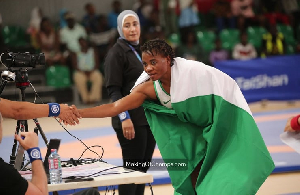Business News of Monday, 6 October 2025
Source: Oluwole Dada, Contributor
Balancing toughness and tenderness
Leadership is not a one-dimensional trait. It is a delicate balance of contrasting qualities. Great leaders are both tough and tender. They are firm in their decisions yet compassionate in their approach. This duality is not a contradiction but a necessity for effective leadership.
A leader’s tenderness is rooted in empathy and emotional intelligence. It is the ability to understand and share the feelings of others, to create a safe and supportive environment where team members feel valued and heard. This quality fosters collaboration, innovation, and a sense of belonging. It also strengthens trust and loyalty within the organization.
While tenderness builds trust and connection, toughness ensures accountability and progress. Leaders must be firm in upholding standards, addressing poor performance, and making difficult decisions. Toughness is not about being authoritarian. It’s about being fair, consistent, and resolute in pursuing organizational goals.
Alan Mulally, the former CEO of Ford Motor Company demonstrated this when he joined Ford in 2006. The company was on the brink of bankruptcy. He implemented a rigorous turnaround plan, demanding accountability from every level of the organization. Mulally’s toughness was evident in his unwavering commitment to the plan, even when faced with resistance. His firm leadership saved Ford from collapse and restored its position as a leading automaker.
The most effective leaders understand that toughness and tenderness are not mutually exclusive. They are rather complementary. Emotional intelligence enables leaders to navigate this balance, knowing when to be firm and when to be compassionate. Howard Schultz, the former CEO of Starbucks, exemplifies this synergy. Schultz built Starbucks into a global brand by fostering a culture of care and inclusion. He introduced benefits like healthcare and stock options for part-time employees, demonstrating his tenderness. At the same time, Schultz was tough in maintaining high standards for customer experience and product quality. His leadership style created a loyal workforce and a strong brand identity.
In demanding accountability, start difficult conversations by acknowledging the person’s situation, then state the gap between expectations and performance, and end with a concrete plan and a timeline. Firmness should be communicated through clarity, not anger. Toughness sometimes requires tough changes. In executing changes, create forums for team members to voice concerns, reflect those concerns in the plan, and communicate the rationale clearly and repeatedly. An approach of tenderness lowers resistance to change. When people feel heard and respected, they are more likely to embrace new directions. Toughness is not yelling but clarity in decisions, boundaries and consequences.
Doug McMillon, CEO of Walmart, demonstrates this balance in action. Leading the world’s largest private employer requires immense toughness. You can imagine making decisions that affect millions of employees and customers, competing in a brutal retail environment, and managing complex global operations. Yet McMillon is known for his genuine care for Walmart’s employees. He regularly visits stores not just to inspect operations but to listen to frontline workers about their challenges. He has implemented policies like increased wages and educational benefits that show genuine concern for employee wellbeing. At the same time, he’s been tough about modernizing Walmart’s operations, closing underperforming stores, and demanding accountability from leadership.
Leaders must recognize that they need to lead the company to achieve its objectives, and with this, they need to be fair and firm. Many well-intentioned leaders fail at this point. They mistake being tender for being permissive, being compassionate for avoiding accountability. Anne Mulcahy’s turnaround of Xerox provides a masterclass in balanced leadership. When she became CEO in 2001, Xerox was on the brink of bankruptcy, with $17 billion in debt and a collapsing stock price. The situation demanded extreme toughness which included massive restructuring, difficult layoffs, and painful decisions about which businesses to exit.
Mulcahy approached this crisis with remarkable tenderness alongside her toughness. She personally visited facilities to explain decisions to employees face-to-face. She listened to their concerns and fears. She was transparent about the company’s situation and what was required to survive. When announcing layoffs, she did so with genuine compassion, providing generous severance and job placement assistance. At the same time, she was uncompromising about accountability and performance.
Executives who couldn’t meet the new demands were replaced. Underperforming business units were closed. She was fair by holding everyone to the same standards, but she was also firm. Her actions resulted in one of the most successful corporate turnarounds in modern business history.
As you reflect on your leadership journey, it is important to ask if you are developing both capacities of toughness and tenderness or you are over-relying on one at the expense of the other. The leaders we remember most fondly, and respect most deeply are those who demanded our best while caring about our wellbeing. They are those who held us accountable while supporting our growth. They were tough enough to challenge us and tender enough to believe in us. The integration of toughness and tenderness is what creates extraordinary results and builds enduring organizations. That is what it means to lead with both strength and heart.
Oluwole Dada is the General Manager at SecureID Limited, Africa’s largest smart card manufacturing plant in Lagos, Nigeria.












